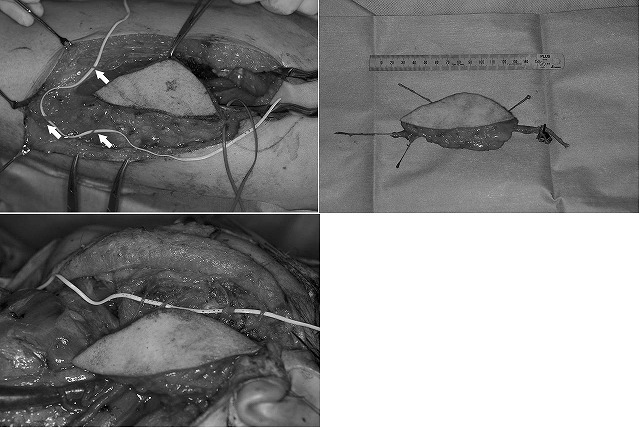Sunday, October 8, 2006
11079
Free Vascularized Lateral Femoral Cutaneous Nerve Graft Combined with an Anterolateral Thigh Flap for Immediate Facial Nerve Reconstruction
Introduction: Facial nerve is often sacrificed in ablative surgery of the malignant parotid tumors. However, the recipient beds of the nerve graft are often accompanied by poor vascularization as a result of irradiation and scarring from previous operation, which leads to poor functional recovery of the facial nerve. We introduced a free vascularized lateral femoral cutaneous nerve (LFCN) graft combined with an anterolateral thigh (ALT) flap to reconstruct facial nerve and soft tissue defect simultaneously and to obtain a good functional nerve recovery.
Material and Methods: Three patients had reconstruction of the facial nerve through a vascularized LFCN graft combined with ALT flap. Their mean age was 45 years (range 32-51). The primary tumor was a carcinoma of the parotid gland in all cases. All cases had risk factors that might inhibit functional recovery of facial nerve, such as preoperative or postoperative irradiation and scarring from previous operation. They were treated by wide resection of the affected parotid gland. All branches of facial nerve was identified, marked and secured. A free ALT flap including LFCN was elevated to reconstruct the primary defect and facial nerves. Three to four branches of the LFCN were identified and sutured to zygomatic, buccal and marginal mandibular branches. The lateral circumflex femoral artery and vein were anastomosed to the superior thyroid artery or transeverse cervical artery and internal juglar vein, respectively.
Results: Transferred flaps survived without complications in all cases. In two of the three cases, fuctional recovery of the facial nerve was observed after 6 and 8 months postoperatively. The function of facial nerves was assessed by House-Brackmann grading system and Forty-point grading system every month.
Discussion: Better nerve regeneration with vascularized nerve grafts than that with conventional non-vascularized nerve grafts has been revealed by many clinical and experimental studies. The advantages of the vascularized LFCN graft combined with ALT flap are as follows; 1) Donor site morbidity is low because ALT is a perforator flap and muscles are spared. 2) Diameter, length and branching of LFCN are appropriate for facial nerve reconstruction. 3) ALT flap has a moderate volume for the defect after parotidectomy.
Conclusion: This method is technically simple, has minimal donor site morbidity and can expect successful nerve recovery.
View Synopsis (.doc format, 155.0 kb)

